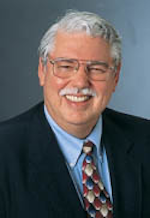MARKET WATCH: Oil prices retreat; gas prices continue falling
Crude and petroleum product futures contracts on Aug. 2 gave back part of their price gains from the previous session while natural gas continued falling, down 9% through last week.
In the stock market, analysts in the Houston office of Raymond James & Associates Inc. reported, “US equities set yet another closing high [on Aug. 2], with the Dow Jones Industrial Average gaining 0.5% and the Standard & Poor’s 500 Index up 1.1% on the week. The SIG Oil Exploration & Production Index and the Oil Service Index outperformed with gains of 3% and 1.8%, respectively.” The equity market was flat and oil and gas prices were down in early trading Aug. 5.
Energy prices
The September contract for benchmark US light, sweet crudes retreated 95¢ to $106.94/bbl Aug. 2 on the New York Mercantile Exchange. The October contract declined 69¢ to $106.24/bbl. On the US spot market, West Texas Intermediate at Cushing, Okla., was down 95¢ to $106.94/bbl.
Heating oil for September delivery surrendered 2.52¢ to $3.07/gal on NYMEX. Reformulated stock for oxygenate blending for the same month more than wiped out its previous gain, however, down 3.37¢ to $2.99/gal.
The September natural gas contract continued its fall, down 4¢ to $3.35/MMbtu on NYMEX. On the US spot market, gas at Henry Hub, La., dropped 2.5¢ to $3.39/MMbtu.
In London, the September IPE contract for North Sea Brent decreased 59¢ to $108.95/bbl. Gas oil for August gave back $3.25 to $923.75/tonne.
The average price for the Organization of Petroleum Exporting Countries’ basket of 12 benchmark crudes gained 55¢ to $106.65/bbl. So far this year, OPEC’s basket price has averaged $105.01/bbl.
Contact Sam Fletcher at [email protected].

Sam Fletcher | Senior Writer
I'm third-generation blue-collar oil field worker, born in the great East Texas Field and completed high school in the Permian Basin of West Texas where I spent a couple of summers hustling jugs and loading shot holes on seismic crews. My family was oil field trash back when it was an insult instead of a brag on a bumper sticker. I enlisted in the US Army in 1961-1964 looking for a way out of a life of stoop-labor in the oil patch. I didn't succeed then, but a few years later when they passed a new GI Bill for Vietnam veterans, they backdated it to cover my period of enlistment and finally gave me the means to attend college. I'd wanted a career in journalism since my junior year in high school when I was editor of the school newspaper. I financed my college education with the GI bill, parttime work, and a few scholarships and earned a bachelor's degree and later a master's degree in mass communication at Texas Tech University. I worked some years on Texas daily newspapers and even taught journalism a couple of semesters at a junior college in San Antonio before joining the metropolitan Houston Post in 1973. In 1977 I became the energy reporter for the paper, primarily because I was the only writer who'd ever broke a sweat in sight of an oil rig. I covered the oil patch through its biggest boom in the 1970s, its worst depression in the 1980s, and its subsequent rise from the ashes as the industry reinvented itself yet again. When the Post folded in 1995, I made the switch to oil industry publications. At the start of the new century, I joined the Oil & Gas Journal, long the "Bible" of the oil industry. I've been writing about the oil and gas industry's successes and setbacks for a long time, and I've loved every minute of it.

